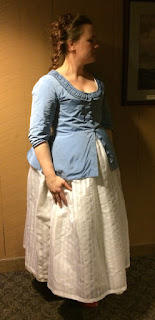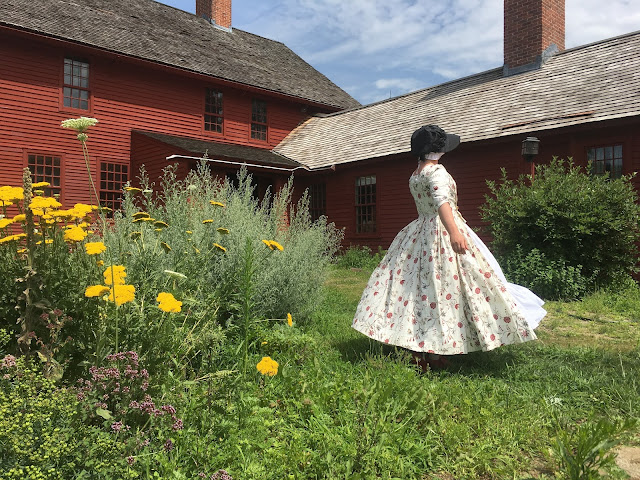 |
| The Enraged Macaroni, 1773 by Philip Dawe |
All the advice from the reenacting community when researching one's impression says to "reference period images", but it's not always obvious where to look. Portraits in oil on canvas of lords and ladies from England aren't always helpful when portraying a middle or working class person in the American colonies during the Revolutionary War. Museum collections of extant pieces often aren't helpful either, as they usually belonged to the wealthy, (and the European).
Some of the Best Places to Look
- The British Museum Collections Search
- The Yale Lewis Walpole Library Collections Search
You can use the names of the creators and publishers of popular prints from the period as search terms.
In no particular order, some of those names include: William Doughty, Daniel Gardner, Carington Bowles, Matthew Darly, R. Sayer and J. Bennet, John Raphael Smith, James Birchall, James Bretherton, John Boydell, P. Stee, and Philip Dawe.
 |
| The fruit barrow painted by H. Walton engraved by J.R. Smith. |
"A manner of engraving on copper or steel by scraping or burnishing a roughened surface to produce light and shade." - Miriam Webster
Period mezzotints are a great source for visual references for everyday folks. They feature satires, scenes of street life, political cartoons, and such. The images were etched backwards into softish metal, and then inked like a stamp. They were used in newspapers, magazines, and what passed for "mass produced" images in the 1770s. The National Portrait Gallery has a lengthy article on the origins, and the specifics if you're interested.
There is a great article on mezzotint print-making at The Drawing Studio. It details the process of burnishing a copper plate, applying ink, and making a print.
Christ Church, one of the colleges at Oxford University in the UK has a special collection of printmaking stuff, and they've got an article on the process here - Printmakers and Publishing in the 18th Century
Contemporary 21st century artist, Jim Hubbman's article on mezzotint printmaking, The Mezzotint Process
I have assembled here a few resources, and search terms that will help a newcomer to the hobby, or the documentation process. A few databases through which I have found several period mezzotint images include:
 |
| John Raphael Smith Self Portrait in colors chalk, c. 1807 National Portrait Gallery |
When looking for these mezzotints, helpful search terms include the publishers of popular
When searching for these names, click the "advanced search" button, and limit your date range from 1760-1780, or so.
The artists who made the original drawings from which the prints were made include:
John Raphael Smith
There is a lengthy article on the function, use, and significance of this uniquely British art form from the Metropolitan Museum of Art's Timeline of Art entitled The Printed Image in the West: Mezzotint.
In this article, Elizabeth Barker tells us that Mezzotints circulated widely and were sold cheaply like posters in a variety of sizes (including "royal" 24x19 inches, "large" 18x24 inches, "posture" 14x10, and "small" 6x4) Collectors of these popular images assembled portfolios or albums of leading figures of the day, or displayed "genre" scenes on their walls. Such "furniture prints" might be framed, mounted on stretchers, or passed directly on the walls of people's houses, and public spaces.
 |
| Plucking the Turkey by Henry Walton, 1776 |
British Artists who worked in this style during the 1770s include:
As always, consider context. Most of these images are from Europe, and not the North American colonies, and what's suitable for London in 1776 isn't necessarily suitable for Boston, or rural New England in the same year, but there will be certain constants. Mezzotints and genre paintings are definitely not the only sources, but they are some of the best visuals for non-aristocrats from the Revolutionary War period. Runaway ads, probate records, and other print sources are some of the best for specifics of middle and working class women's dress, but don't tend to involve visuals. Happy Researching.




























